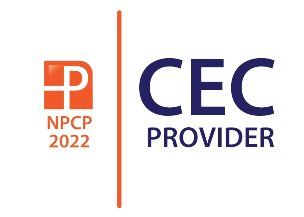Course content descriptions
Read what you will learn about in our Pilates instructor training modules and other course content.
Introduction to Anatomy
This self-study subject introduces you to the primary muscles that are involved in movement, joint structure, and function, which are targeted in Pilates exercises. You are given texts and study guidelines to direct your own learning.
Prerequisite: None.
Exemptions:
Students who have already passed a tertiary level anatomy course (or equivalent) can be exempted from this subject. Such students would include licensed health care professionals (eg physiotherapists, doctors, osteopaths, chiropractors etc) or personal trainers. Please prove your eligibility for this exemption by sending us a copy of your academic transcript or certificate with your registration information.
Cost:
$200 including test
Test: Sent out to you with the subject's booklet.
Instructor training modules
You can study each module in a series that will lead you to a Mat, Reformer, Equipment, or Comprehensive Pilates Instructor qualification. You can also study modules separately to add to an existing qualification.
Essentially Pilates Movement and Teaching Principles
This is an essential foundation module for all Hearts and Bones Pilates instructor training. The module is a combination of self-study using a manual, online course material and 6 hours of face-to-face training.
The module introduces you to the biomechanical movement principles of the Pilates method. Understanding these principles is essential for assessing and correcting body alignment, and improving flexibility and strength. You will also learn successful cueing techniques and how to motivate clients. Other topics studied include breathing, functional core strength, scapulae and pelvic stabilisation, and spinal and hip mobilisation. You'll also learn Pilates philosophy, history, and professionalism (scope of practice and code of ethics).
Prerequisites:
25 hours Mat or Comprehensive Pilates class attendance, and passing Introduction to Anatomy (or equivalent).
Steps to complete this module:
- We'll send you a fully illustrated manual and give you a link to our online learning platform.
- Complete the open-book, multiple-choice examination at the end of your online course before attending the taught hours.
- Attend 6 hours of face-to-face tuition.
Mat 1
Learn the beginner- to intermediate-level mat exercises. The exercises include modifications (to simplify an exercise), variations (to create a similar or more complex exercise), and main muscle activations.
Lectures also cover: postural assessment; teaching principles; motivation; mat class structure; safety in the mat class; giving feedback; the use of imagery and touch; guidelines for modifying Pilates exercises.
Prerequisites: Introduction to Anatomy (or equivalent); Essentially Pilates Movement and Teaching Principles.
Mat 2
Explore how to use small pieces of equipment (including the Swiss ball, foam roller, flex ring and Theraband) to vary, increase, or assist exercises. You are also taught advanced-level mat exercises. Lectures cover: guidelines for using small pieces of apparatus; evaluating your teaching practices; common injuries; Pilates for pre- and post-natal women; exercise guidelines and contraindications for people with osteoporosis.
Prerequisites: Mat 1.
Extra requirements:
15 hours observation, 20 hours self-practice, and 40 hours student teaching.
Reformer 1
This course introduces you to the Pilates Reformer. Topics studied include: set-up and safety, teaching beginner-level exercises, and sequencing exercise programmes. Lectures also cover: assessing posture, muscle flexibility, and strength; teaching principles; class structure; and contraindications to movement.
Prerequisites:
Introduction to Anatomy (or equivalent); Essentially Pilates Movement and Teaching Principles; attendance at 30 Pilates Reformer classes.
Reformer 2
Learn how to teach intermediate-level Reformer exercises and modifications. Lectures focus on teaching people with different levels of ability and physical limitation. You will also learn how to evaluate common injuries with the Pilates repertoire in mind.
Prerequisites: Reformer 1.
Reformer 3
Learn how to teach advanced-level Reformer exercises. Lectures also cover programme tips, and strategies for teaching advanced level clients safely while challenging them.
Prerequisites: Reformer 2.
Extra requirements:
57 hours observation, 60 hours of self-practice, and 40 hours student teaching.
Trapeze Table (Cadillac)
Learn how to add variety and challenge for clients by applying the principles you have learned to the Cadillac. Lectures also cover Cadillac safety and set-up.
Prerequisites: Mat or other equipment training.
Extra requirements:
10 hours each of observation, 3 hours self-practice, and 20 hours student teaching.
Wunda Chair
Learn how to add variety and challenge for clients by applying the principles you have learned to the Wunda Chair. Lectures also cover Wunda Chair safety and set-up.
Prerequisites:
Mat or other equipment training.
Extra requirements:
5 hours observation, 3 hours self-practice, and 10 hours student teaching.
Barrels
You will learn how to do Classic Pilates exercises on the Ladder Barrel, Spine Corrector, and Half Barrel.
Joseph Pilates originally designed these ingenious pieces of small apparatus to provide variations for many of the Classic Mat exercises, such as Swimming and Roll-Over.
The Ladder Barrel helps you work the body in every range of motion.
The Spine Corrector (also known as the Step Barrel) is designed to focus on the core abdominal, back, and shoulder muscles.
The Half Barrel helps support the back and shoulders and open up the neck, hips, and thighs. It is great to use with mat workouts.
Prerequisites: Mat or other equipment training.
Extra requirements: 5 hours each of observation, 2 hours self-practice, and 10 hours student teaching.
Introduction to Myofascial Release (MFR)
Fascia (or myofascia) surrounds and covers all your muscles and bones. This outer fascial covering is very strong and very flexible. Under a microscope, fascia resemble a fluid filled fishnet.
In the normal healthy state, the fascia is soft. It can stretch and move without restriction. When you're injured or have an tissue inflammation, the fascia loses its flexibility. It can become tight, restricted, and cause tension throughout the rest of your body.
Releasing tight areas can:
- increase your power
- improve your joint range of motion
- improve your lifestyle-induced muscle pains
- keep your body strong, well-aligned and flexible
- have a calming effect on your nervous system.
Myofascial release works well with the Reformer. You will gain more from your Reformer workout if you add some fascial release work. What you'll learn.
On this course, you'll learn:
- what fascia is and its role in your body
- how to use a pair of large spiky balls and a smaller one to get your body moving
- different ways to use spiky balls in many ways to prepare your body for a Pilates class.
Group Reformer training
Learn to teach Group Reformer classes. You can attend this course whether you are a new to teaching Pilates or an existing instructor.
Group Reformer 1
Introduction to Myofascial Release
As an introduction to group Reformer teaching, you'll learn:
- the set-up and safety protocols for the Reformer
- beginner-level exercises and how to apply the Essentially Pilates Movement Principles
- how to test muscle strength and flexibility as part of a class
- sequence group exercise classes
- 5 principles that make group reformer classes successful.
Lectures will also cover:
- teaching principles
- group reformer class structure
- contraindications to movement.
Prerequisites: Introduction to Anatomy (exemptions may apply); Essentially Pilates Movement and Teaching Principles online course; 25 hours class attendance; current first aid certificate.
Group Reformer 2
Learn how to teach intermediate-level Reformer exercises. Lectures focus on teaching people with different levels of ability. You'll learn how to:
- change exercises for someone needing a simpler option
- vary exercises to challenge more advanced clients
- evaluate common injuries with the Pilates repertoire in mind.
Prerequisites: Group Reformer 1.
Extra requirements: 10 hours observation; 20 hours self-practice; 40 hours student teaching (20 supervised, 20 unsupervised).
Just wanted to say how grateful and appreciative I am for having been able to do the Pilates Essentials, Mat 1 and 2 and now revisiting the workbooks and notes to answer the exam questions. Brings a freshness to my learning and teaching and reminds me of the many helpful things you share so generously." -



Hearts & Bones Pilates Centre. All rights reserved. Please comment to: heartsandbonespilates@gmail.com
Terms & conditions